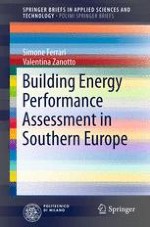
2016 | OriginalPaper | Buchkapitel
3. Implications of the Assumptions in Assessing Building Thermal Balance
verfasst von : Simone Ferrari, Valentina Zanotto
Erschienen in: Building Energy Performance Assessment in Southern Europe
Aktivieren Sie unsere intelligente Suche, um passende Fachinhalte oder Patente zu finden.
Wählen Sie Textabschnitte aus um mit Künstlicher Intelligenz passenden Patente zu finden. powered by
Markieren Sie Textabschnitte, um KI-gestützt weitere passende Inhalte zu finden. powered by